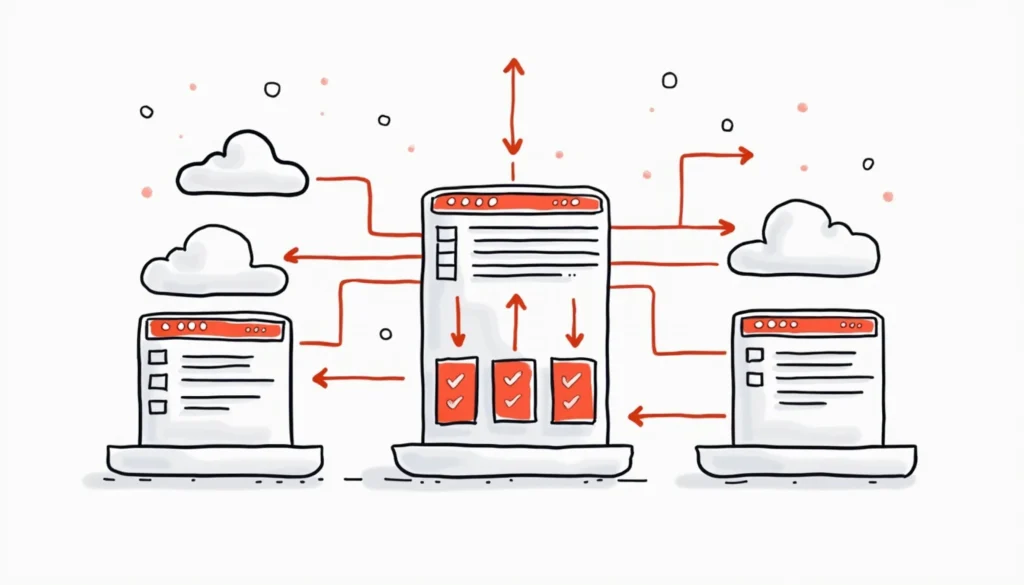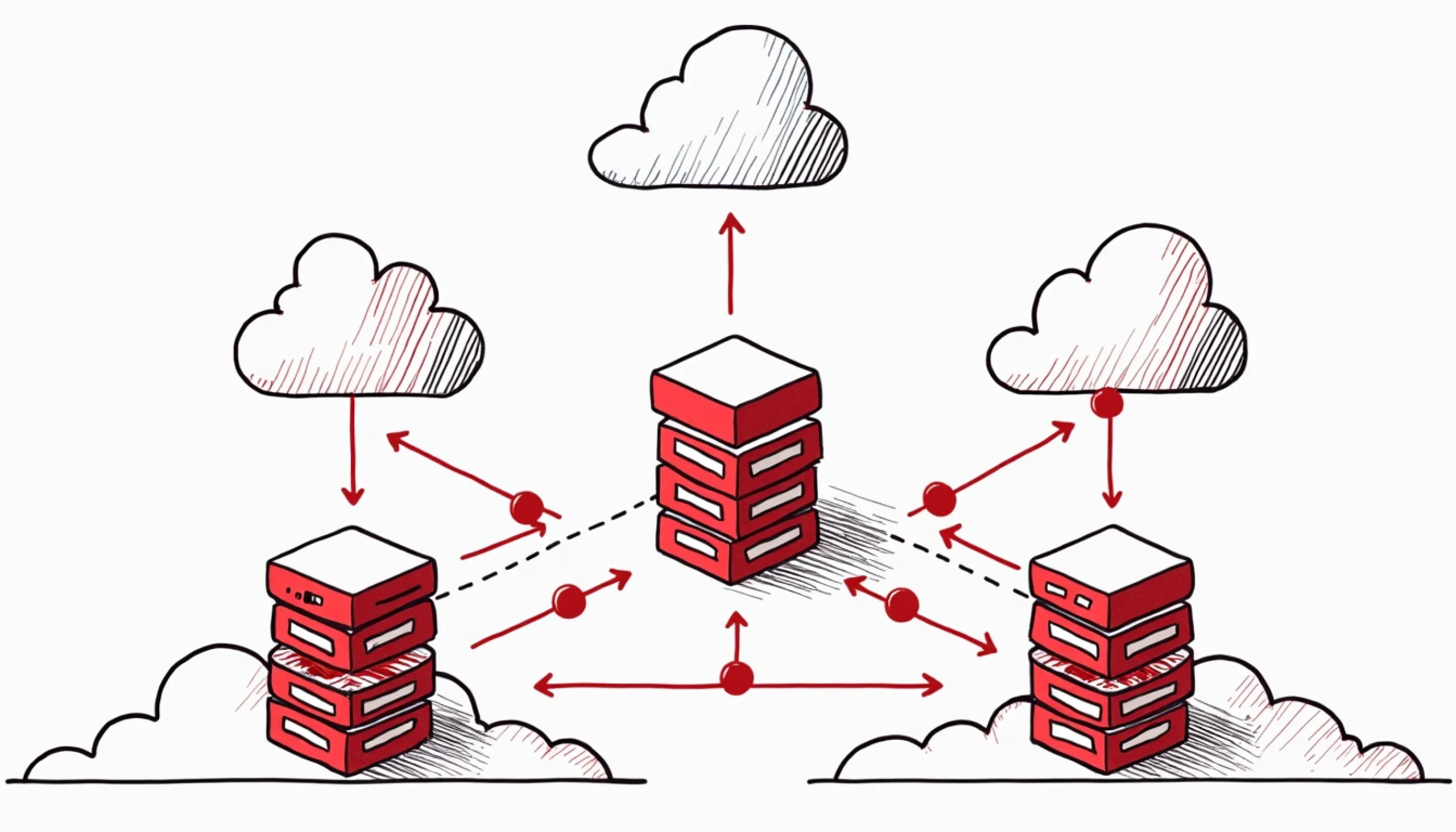Understanding the Basics of Load Balancing
Load balancing is a critical technique in modern IT infrastructures. It distributes incoming application traffic evenly across multiple servers, ensuring that no single server shoulders an excessive burden. By leveraging load balancing, organizations achieve improved performance, lower latency, and a more stable user experience. As a result, network traffic is efficiently routed, preventing server overloads and significantly enhancing application responsiveness.
In cloud computing environments, dynamic load balancing plays an even more pivotal role. Rather than relying on a single server, you can utilize multiple instances to process requests. This horizontal scaling approach creates a robust, high availability architecture that maintains seamless performance even when demand surges. With a strong load balancing strategy, you can also improve fault tolerance: if one server fails, traffic is automatically rerouted to healthy servers, minimizing downtime and maintaining service continuity.
What is Load Balancing?
At its core, load balancing relies on intelligent algorithms to direct requests among multiple back-end resources. A load balancer, whether hardware-based, software-based, or a virtual appliance, sits between clients and servers to determine the optimal endpoint for each request. Common load balancing algorithms—such as round robin, least connections, and IP hashing—help optimize resource usage, reduce response times, and keep infrastructure costs in check.
In addition to improving resource utilization, load balancing safeguards your environment by eliminating single points of failure. Distributing elastic load across several instances extends hardware lifespans, trims operational expenses, and fortifies your system’s resilience. As organizations increasingly move toward microservices and container-based deployments, leveraging an effective load balancing solution ensures that you maintain agility, scalability, and top-tier performance.
Importance of Load Balancing in Cloud Computing
In the cloud, applications often span multiple regions and availability zones, serving users spread around the globe. AWS managed load balancing services, such as AWS Elastic Load Balancer offerings, make it possible to seamlessly handle varying workloads while maintaining a stable, high-performing environment. With AWS, you can automatically add or remove back-end instances—relying on auto scaling—to keep your application responsive and cost-effective.
Load balancing also plays a key role in disaster recovery strategies. If a server goes down, health checks managed by the aws load balancer controller detect this failure and redirect traffic to healthy targets, preserving uptime. With features like cross zone load balancing, requests can be evenly distributed across multiple availability zones, adding another layer of resilience. Moreover, distributing load across multiple instances helps deter malicious actors from targeting a single server, and built-in features like a web application firewall (WAF) or AWS WAF integration protect applications from common threats.
Security measures extend further with encrypted connections. By using SSL/TLS certificates—often provisioned through AWS Certificate Manager—and implementing SSL termination on your load balancer, you ensure the confidentiality and integrity of your data in transit. This layered approach, combined with the stability provided by AWS managed load balancing services, results in a secure, highly available environment that enterprises and SMBs alike can trust.
Introduction to AWS Managed Load Balancing Services
Amazon Web Services (AWS) simplifies infrastructure management by offering a suite of aws managed load balancing services. Rather than deploying and maintaining on-premises hardware, you can select a suitable AWS load balancer—such as the Application Load Balancer (ALB), Network Load Balancer (NLB), Classic Load Balancer, or the newer Gateway Load Balancer—depending on your application’s architectural needs.

AWS Application Load Balancer (ALB) excels at managing HTTP/HTTPS traffic at Layer 7, supporting advanced request routing, microservices communication, and container-based architectures. The AWS Network Load Balancer (NLB) handles massive volumes of TCP/UDP traffic at Layer 4 with extremely low latency, making it perfect for workloads requiring ultra-fast response times. The Classic Load Balancer—while older—is still effective for simple HTTP/HTTPS tasks and can be a starting point for organizations migrating from traditional setups.
Recently, AWS introduced the Gateway Load Balancer, a specialized service designed to route traffic through virtual appliances. This allows integration of services like firewalls and intrusion detection systems directly into your traffic flow. With a Gateway Load Balancer endpoint, you can simplify the insertion of security and network monitoring tools, ensuring traffic is inspected or processed by third-party solutions before reaching your application servers.
Meanwhile, elastic load balancing on AWS integrates with other services—like aws ec2, aws lambda, and more—providing a cohesive environment for building, scaling, and securing modern applications. You can leverage these managed services alongside solutions from the aws marketplace, or integrate with amazon cloudwatch to monitor performance metrics like processed bytes, latency, and load balancer capacity units to fine-tune configurations.
Overview of AWS Load Balancing Services
AWS’s elastic load balancing portfolio allows you to handle various traffic types—HTTP, HTTPS, TCP, UDP—and is deeply integrated with the entire AWS ecosystem. For instance, the aws application load balancer supports host-based and path-based routing, ideal for complex web environments. The network load balancer is perfect for latency-sensitive workloads, while the gateway load balancer is geared towards routing traffic through third-party appliances for inspection and filtering.
These services feature automated scaling, integrated health checks, and easy provisioning through the aws console or aws cli, so you can quickly spin up a load balancer, integrate it into your network architecture, and ensure it grows with your application’s demands. Whether you’re dealing with microservices, monolithic architectures, or edge security appliances, AWS provides the flexibility and control you need.
Deep Dive into AWS Load Balancer Types
Classic Load Balancer
The classic load balancer, an older but still useful option, supports Layer 4 and Layer 7 protocols. Although largely superseded by the ALB and NLB, it can still be valuable for legacy applications or straightforward HTTP/HTTPS workloads. If you’re migrating from on-premises to AWS, the Classic Load Balancer provides a familiar first step.
Application Load Balancer
The application load balancer shines in modern, distributed architectures. Operating at Layer 7, it offers advanced routing mechanisms to distribute load based on URL paths, hostnames, and HTTP headers. With the ALB, you can integrate a web application firewall and take advantage of container orchestration, microservices environments, and sophisticated request-level routing. This makes managing application load straightforward, ensuring each microservice receives relevant traffic without unnecessary overhead.
Network Load Balancer
For applications demanding ultra-low latency and massive throughput, the network load balancer is ideal. It handles millions of requests per second at Layer 4, making it suitable for large-scale gaming platforms, IoT backends, or financial trading systems. Coupled with support for static IP addresses, integration with the aws nlb can provide stable, consistent performance even during traffic surges.
Gateway Load Balancer
The gateway load balancer allows you to deploy and scale third-party virtual appliances like firewalls, intrusion detection systems, or performance monitoring tools inline with your network traffic flow. By using a gateway load balancer endpoint, you can seamlessly route traffic through these appliances without altering your application architecture. This allows for easier implementation of advanced network security and compliance measures.
Configuring AWS Managed Load Balancing Services
Getting started with aws managed load balancing services is a breeze. Choose the appropriate load balancer based on your application’s protocol requirements and performance needs. Then, use the aws console or aws cli to provision it. Add healthy targets to your backend target groups, set up health checks, and integrate auto scaling policies to ensure capacity matches demand.

Cross zone load balancing, available in some load balancer types, can optimize distribution across multiple availability zones to reduce latency and increase resiliency. This feature is especially beneficial for globally distributed applications and can significantly improve user experiences no matter where they are located.
Setting Up Health Checks and Security
Proper health checks are crucial. By configuring health checks on aws managed load balancing services, you ensure the load balancer only routes requests to healthy instances. You can also integrate with aws certificate manager to simplify SSL certificate management, enhancing data security and user trust.

Securing your environment involves leveraging aws waf, deploying virtual appliance-based security solutions via the gateway load balancer, and carefully configuring security groups and network ACLs. The result: a defense-in-depth strategy that safeguards your users and data against common threats.
Building a Modern, High-Performing Cloud Architecture
As you refine your cloud environment, consider how azure load balancer or google cloud solutions compare. While all major providers offer load balancing, aws managed load balancing services stand out due to their integration, scalability, and rich feature sets—encompassing everything from aws elb (older terminology for elastic load balancers) to cutting-edge services like the load balancer controller.
In this dynamic ecosystem, leveraging auto scaling, aws lambda for serverless computing, network load balancing, and the aws alb for application-level routing can streamline your operations. AWS load balancing perfectly aligns with modernization strategies, helping you adopt microservices architectures that enable rapid iteration, resilience, and growth.
Futuralis: Your Partner in AWS Managed Load Balancing Services
Ready to enhance your cloud capabilities without the complexity and cost overhead? Futuralis, an AWS Advanced Tier Partner, specializes in delivering aws managed load balancing services tailored to your unique needs. We excel in cloud migrations, modernization, and integrating AI and ML services. We streamline the process, ensuring you effectively harness the full power of AWS’s load balancing portfolio—from the classic load balancer to the gateway load balancer and beyond.
Don’t let intricate configurations or steep learning curves slow you down. Futuralis’ agile, personalized approach ensures you can seamlessly adopt these technologies, maintain high availability, and stay competitive. Contact us today to speak with an AWS expert, and discover how we can help you build a secure, scalable, and high-performing application environment—backed by aws managed load balancing services that are cost-effective, reliable, and future-ready.



